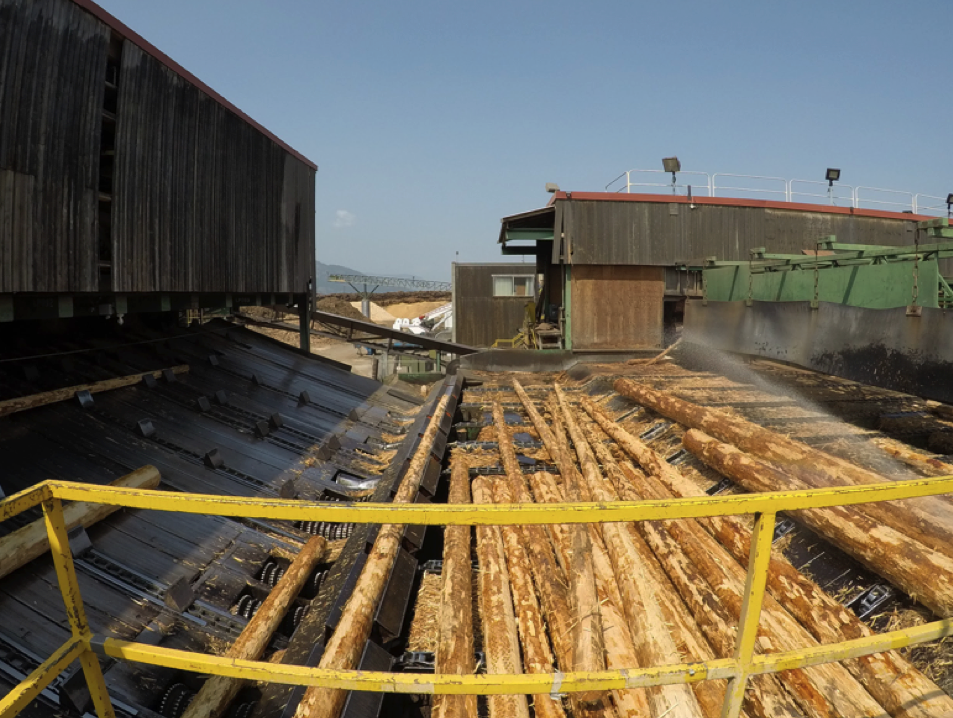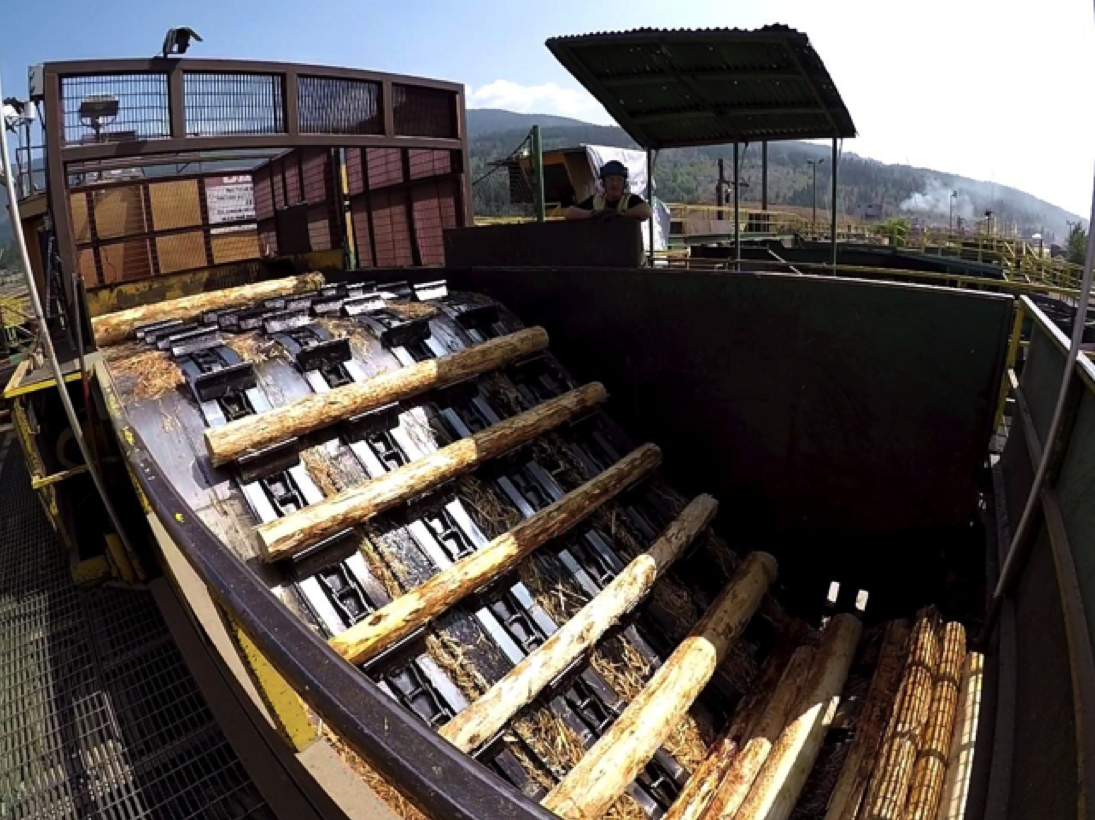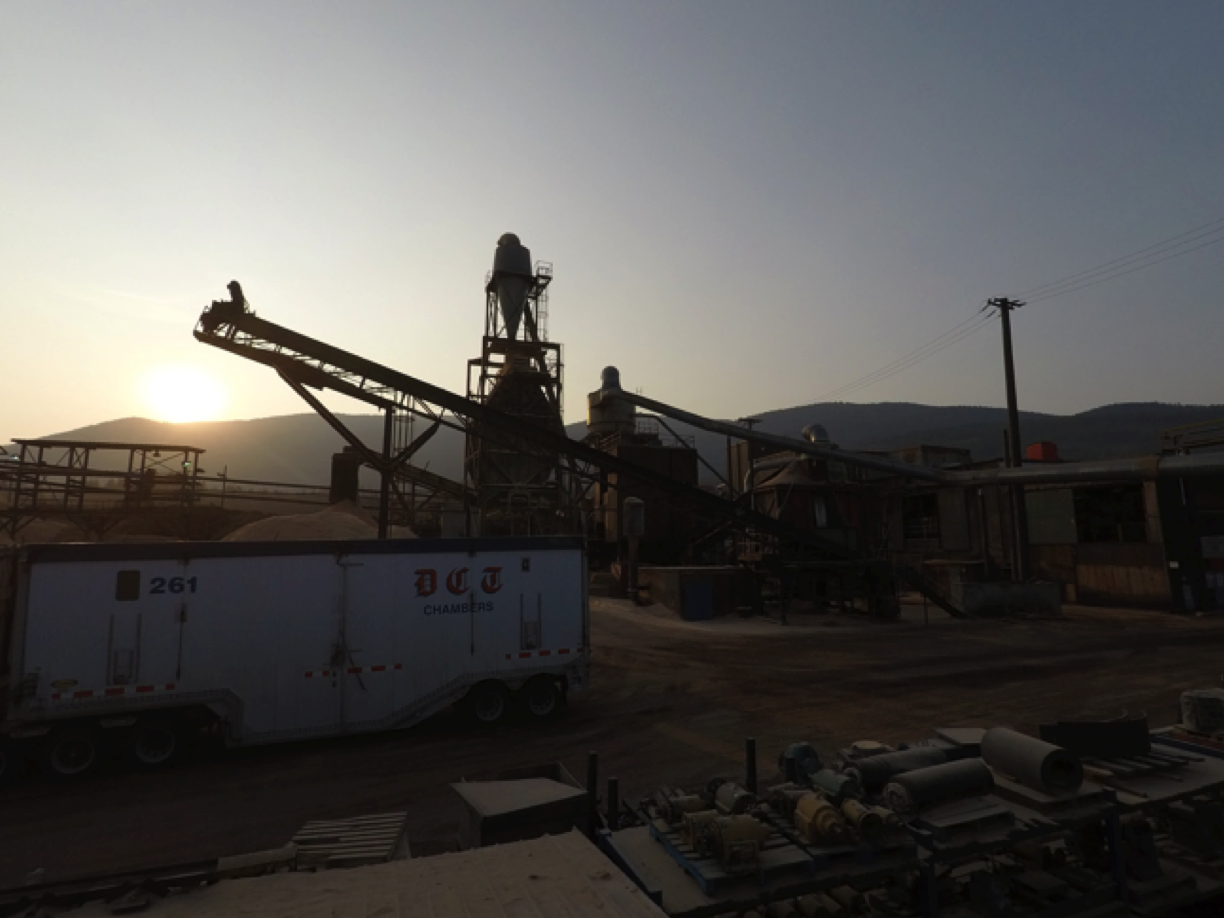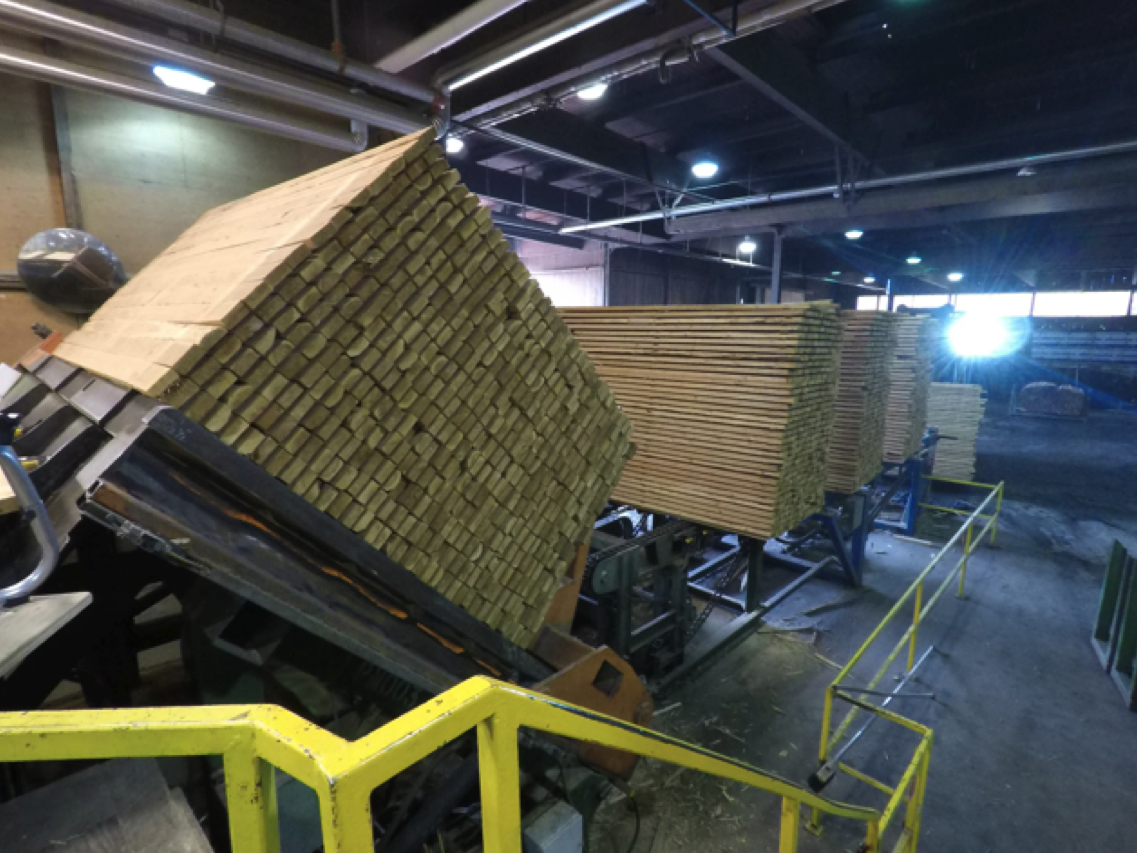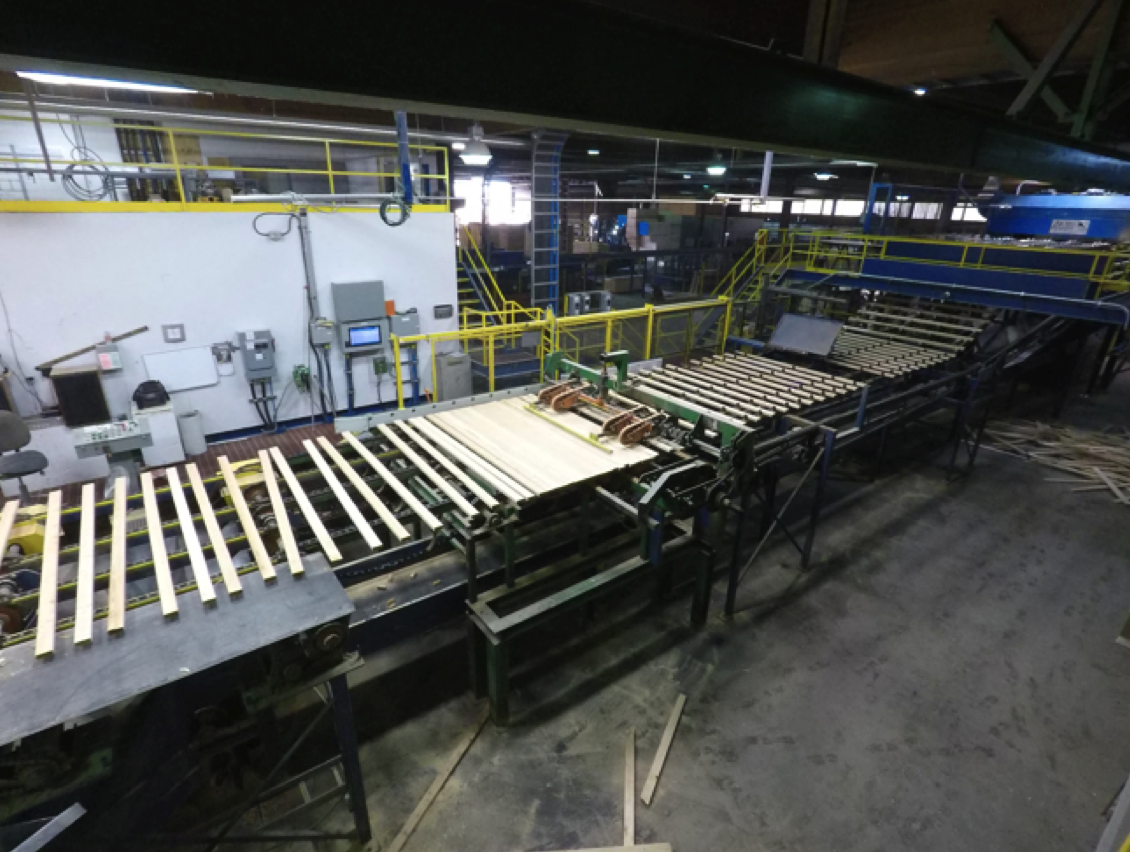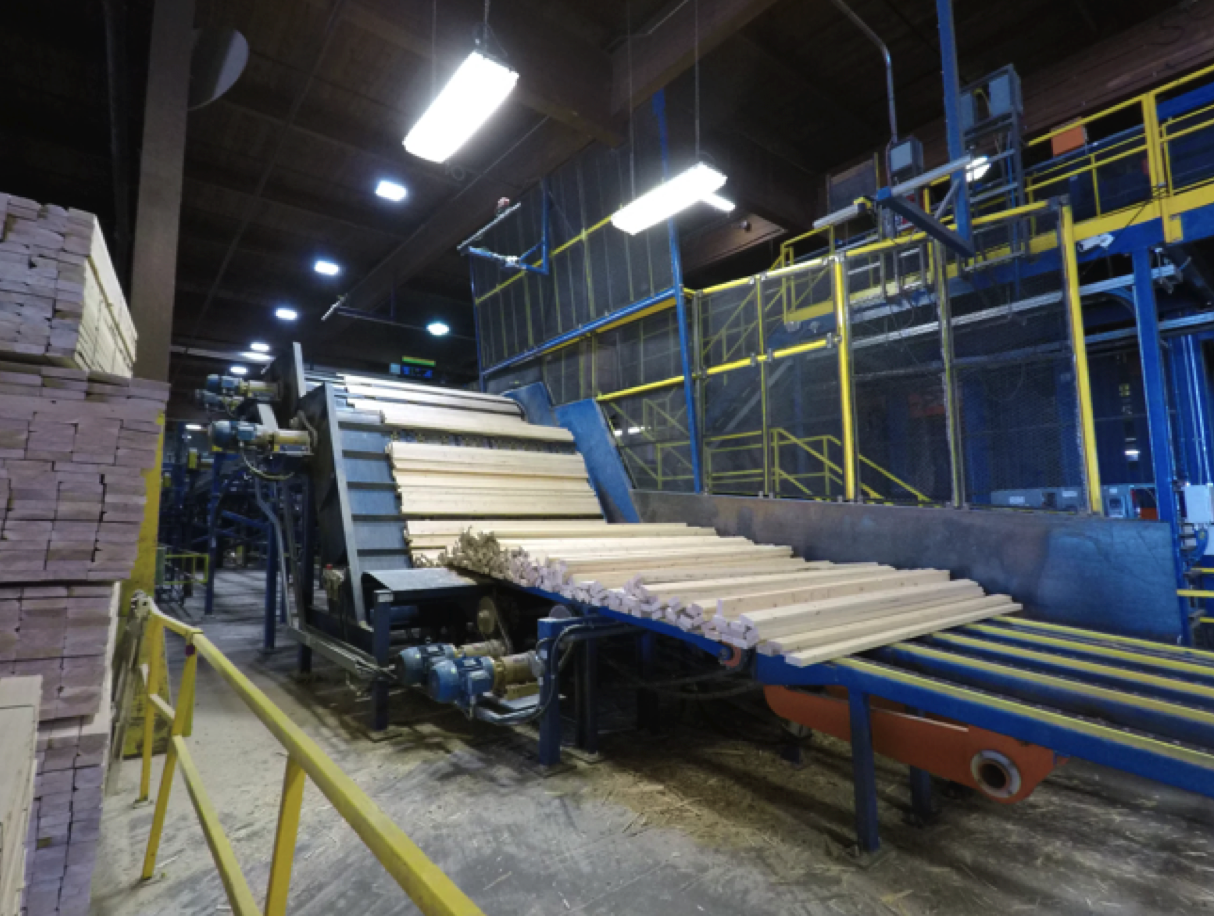Tolko Sawmill
July 30, 2018 1:13 pm Leave your thoughts
I’ve been talking about the mill quite a bit now, so I figured it’s about time that I gave you a rundown on how the mill actually works. Because if you’re anything like I was before I started here, you probably have no idea what happens inside those big buildings that bring in logs and miraculously spit out lumber.
So let’s start at the beginning. The logs are carried from the yard and brought to the debarker. The debarker does exactly what you think it would do; it removes the bark from the logs. Clever, I know. From the debarker the logs are then run through saws which cut them into sections of a standard size, which at our mill is 9ft long. Now that all the logs are the same length they are sorted into bins based on their diameter. After they are sorted, the logs are run through an optimizer that will determine if they will become 2×3’s, 2×4’s, or 2×6’s. A bunch of fancy things happen after this, boards moving around, saws buzzing, sorters sorting, stackers stacking, and then BAM! You’ve got yourself a rough 2×4 nine foot board stacked nicely with hundreds of other boards.
From here we enter phase two of production; drying. The boards are not quite ready to be sent to the planer because they need to be dried out first. Even after sitting in the log yard and being sent through all the saws of the sawmill, the boards will still be holding a lot of moisture. In order to get this moisture out, we run the wood through a kiln. The kilns are basically really really big saunas that draw the moisture out of the wood. Boards can stay in the kiln anywhere from 16 to 32 hours. Once the wood has been deemed dry enough it is sent to the final stage of production: the planer.
The planer trims the boards down so that they are all the same height. Before the boards are run through the planer though, they need to be unstacked from the package that they are in. This is done on the “tilt-hoist” as seen in the figure below. After being planed, the wood is graded based on its quality and then trimmed down to a very precise length. From here, the boards are sorted one last time into bins based on their grade, type, and size. Once a bin is full, it is dropped down, sent through the unscrambler (also seen in the photo below) and stacked into a nice and neat pile. This pile will then be painted on the ends, wrapped in our infamous TOLKO wrapping, and sent out to the yard to be loaded onto a truck and sold to the world.
And wazzam! Now you know how lumber is produced! My job at the mill is basically to make sure all of the operations that run autonomously (ie. no operators) are running smoothly and efficiently. We’re also always introducing new technologies to make sure we are on the cutting edge of manufacturing. Pretty cool, hey?

